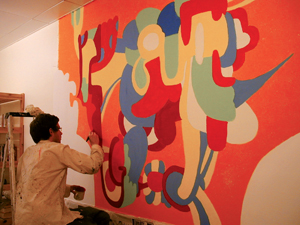Damian Hebron assesses the current state of play for the arts in health sector.

Arts in health has plenty in common with the wider arts sector – it is subject to the same economic and political pressures, only more so. Arts in health is being squeezed by the anticipated public sector funding cuts, by the pressure on trusts and foundations and by the climate of uncertainty, which seems to be afflicting Whitehall in the midst of the pre-election prevarication. On the one hand, Arts Council England (ACE) expertise in the area of arts in health is being diluted with redundancies and the redefinition of ACE. At the same time, despite political commitments to ring-fence the NHS budget, most healthcare providers are dependent on such a range of funding that all are anticipating a reduction in income. The building boom in the NHS – which generated a focus on environmental improvements, especially in hospitals – has now largely come to an end. There are likely to be significant job losses in the NHS as a whole over the next 12 months and any new government is bound to reiterate the clarion call for efficiency savings. It has been hard to generate backing from the NHS for the arts in the good times: how much harder will this be now?
In short, the pressure on the arts in health sector is coming from both sides, but this is nothing new. Despite the evident impact the arts can have on patient experience, arts in health practitioners have often found it hard to convince a health service which is traditionally used to a medical model of measuring evidence. At the same time a rapid improvement in the quality of the art on offer to healthcare providers has failed to quite convince artists and arts organisations who think that the only arts experiences that matter are those served up in cultural cathedrals with a smattering of critical approval.
Arts in health has experienced these pressures for many years and yet the sector persists – in fact it develops and continues to grow. Mainly this is because the impact of the arts on some aspects of well-being is increasingly easy to calibrate, and also because the more that clinical professionals experience the arts (both in terms of their working environment and in terms of participatory opportunities for patients), the more they come to demand it of their employer. The pressure on the NHS from professionals working in mental health, public health and the care of older people particularly is starting to have an impact at the very highest levels. And at the same time, I believe artists will continue to want to explore what it is to be well, what illness means and how we define health. Arts in health is in a squeeze – but the pips aren’t quite squeaking yet.
Damian Hebron is the Director of the London Arts in Health Forum (LAHF). LAHF is currently leading an initiative to co-ordinate arts in health activity in England.
E damian@lahf.org.uk
T 020 7226 2034
W http://www.lahf.org.uk



